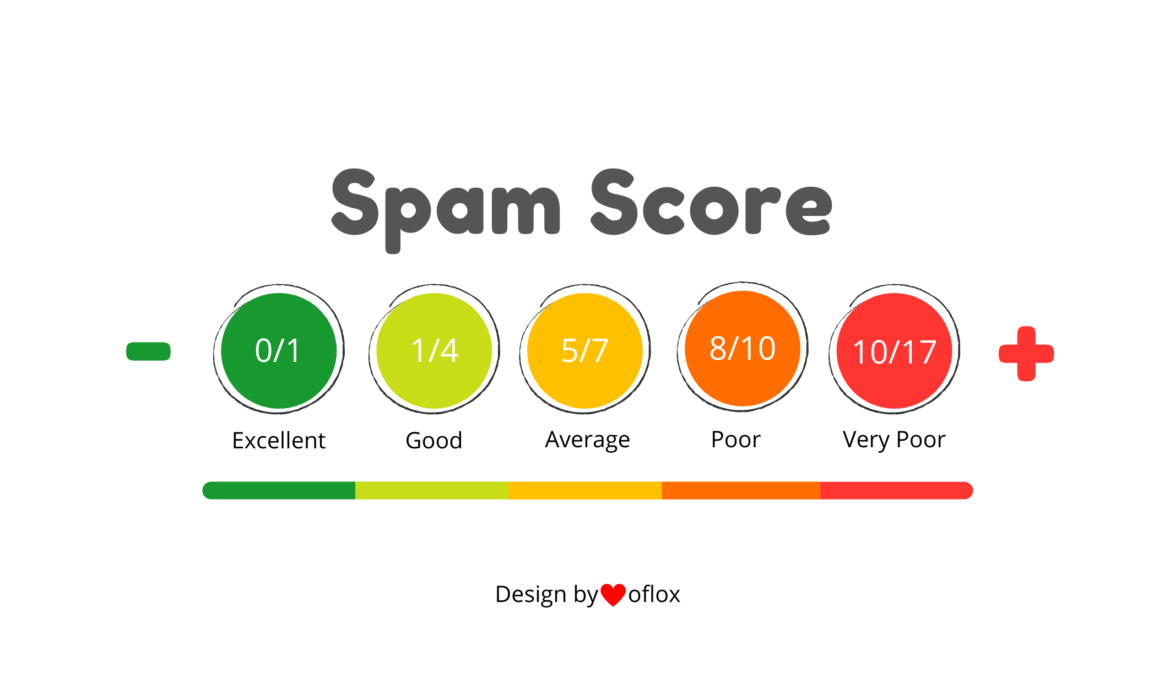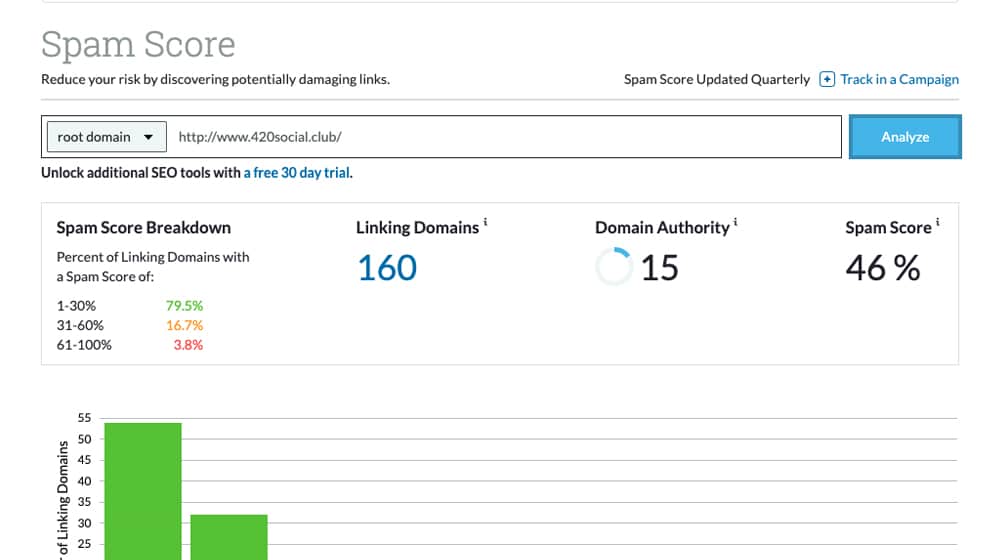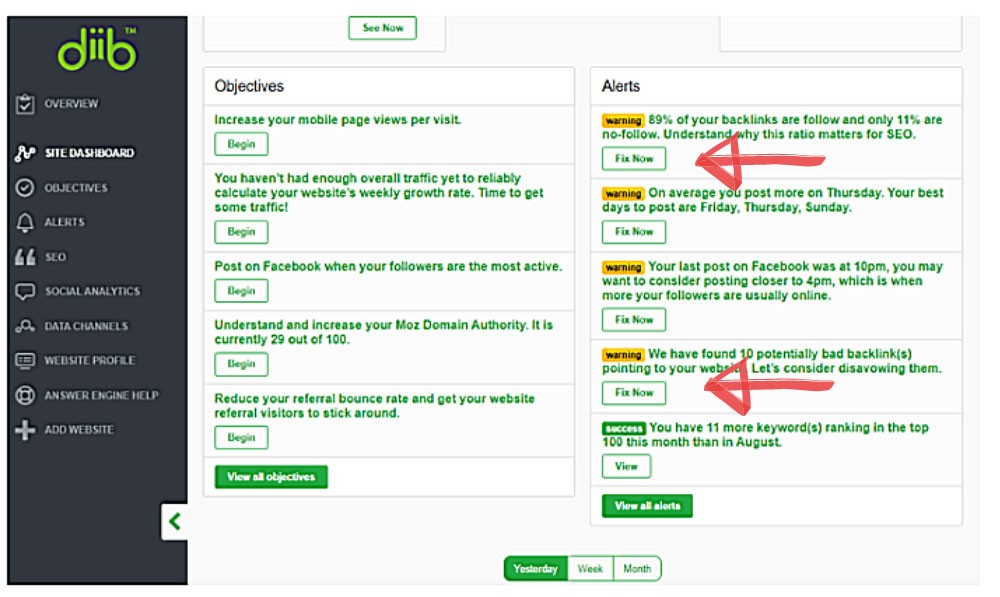When ranking your website for any search engine, you must ensure that you garner enough high quality links to receive a good ranking. This is why many online marketers painstakingly seek out quality links from blog posts or site-wide links. However, when small business owners fail to acquire links or use bad links, their spam score increases, and their websites do not move up in search engine rankings. Eventually, search engines will eliminate these websites as they are considered spammy. This is where a good website spam score checker comes in to save the day. Regularly checking your spam score and removing any questionable links will keep your website healthy and profitable. We’ve put together this comprehensive 2022 spam score checker guide to answer all your questions about spam scores.
What Is a Spam Score?
A spam score is how Google algorithms assess a site’s risk as far as being considered a potential source of spam or malware. It could be better, but it does give us some idea of where to focus our attention and efforts when cleaning up links pointing to a site. A spam score is based on different elements, including how many spammy links point to your site and how risky those links are, as judged by Google. This is where a spam score checker comes in handy and can actually save you time and money. So, how popular is your website compared to other websites on the web?

(Image Credit: Oflox)
Why Is Spam Score Important?
If you’ve never heard of spam score and how it is used in SEO, you definitely aren’t alone. In fact, this is one of the most frequently asked questions we field. For those who do not know, spam score is the formula Google uses to determine how risky a website is when linking to it. A higher spam score will result in Google search spiders avoiding crawling your website, and, as a result, your site will not be indexed in Google search results. If you have a low spam score, congratulations, this means Google has determined that your site is trustworthy and clear of spam and malware.
What Affects Website Spam Score?
The spam score provides an estimate of your site’s risk level. Google bases the score on several different factors, including:
- How many spammy links are pointing to your sites, such as blog comments or forum posts?
- How risky are those links, according to Google spiders, and how popular is your site compared to other websites?
How to Read Your Website Spam Score Level
Google provides three ways for you to find out how risky your site is:
- Google Search Console links the spam score in the ‘Spam’ tab.
- Google Webmaster Tools provides links to these ‘Spam Score’ reports under the ‘Site Details’ section of your website report:
- Google Search Console links the spam score in the ‘Reporting’ tab. Remember, this is an estimate only, not an exact figure you can rely on.
**Spam STATS:
- In the year 2021, 83% of companies around the world faced phishing attacks. Out of which 54% were targeted toward data breaches.
- As of July 2022, Amazon’s impersonated websites were found which were a number of 1,633 websites.
Spam Score Checker 2022
If this information has seemed daunting, don’t worry! With a website spam score checker, you can easily calculate your spam score and see how it compares to your competitors. Spam score factors do not measure the risk of your site being used as a source of malware or spam; instead, it measures how trustworthy your site is compared to others. A spam score checker is an online tool that will help you determine your site’s risk level based on the number of spammy links pointing to it and the overall quality of those links. These tools will allow you to calculate your spam score and see how your site compares to others. For instance:

(Image Credit: Monitor Backlinks)
How A Website Spam Score Is Calculated
Google spiders, who sift through your website’s incoming links, use a variety of signals when determining how likely it is that these links are safe. Your overall spam score is based on three different signals:
- The total number of incoming links that point to your website.
- The total riskiness of these links (as judged by Google).
- The popularity of your site compared to other websites in the search results.
The higher the number of links, the more likely it is you’ll have spammy links. The lower the number, the less likely they are to be spammy.
A high spam score means Google is concerned about the reliability of your site, which means that search engine spiders may not crawl your website or its links. Additionally, Google uses various signals to power the movements of its spiders. One of the biggest signals to Google is the keywords inserted into your website’s HTML code but not visible to human visitors. These results estimate how likely it is these keywords will be found on your site through automated link-following processes.
Other signals come from the pattern of link popularity for your site, the amount of traffic you get from search engines, and how often your site appears in searches. The anti-spam and anti-bait measures are indicated by having a green checkmark or a green open-hand icon in the URL bar and may be activated by clicking the appropriate “OK” button in the warning message.
Content-Aware Scoring System
Google has introduced a Content-Aware Scoring system. This new system aims to reduce the amount of spam on search engine results pages (SERPs). However, it is not entirely practical as it still allows some websites to have favorable bounce rates while still seeing an irrelevant page displayed without warning.
You Might Also Like
The Content-Aware Scoring system utilizes Google’s many algorithms. This allows the search engine to better identify websites containing spam and rank them lower on SERPs. This system also affects mobile devices and mobile SERPs. It can now allow Google to display more organic results on mobile devices rather than paid advertisements.
In addition, this Content-Aware Scoring system helps filter out websites irrelevant to the search query entered by a user. This will help in improving SERPs and will also help to improve both mobile and desktop SERPs.
While this scoring system will help improve the overall quality of search results, it can only do so much in terms of spam. A new system is still a work in progress and still offers a level of uncertainty, Google will continue to use other metrics to measure a website’s authority and trustworthiness.
Why is it Better to Have a Lower Score?
A lower score means that your website is less likely to have been affected by spam or malware. This score also shows that your website is essential and popular, but more than that, it means that Google sees your website as trustworthy. The lower the score, the more likely it is that Google spiders will crawl your website, and therefore they will index your site in the search results.
How Can I Improve My Good Spam Score?
Reputation is a big benefit to having a good spam score. Google recommends that you follow a few basic measures to improve your site’s reputation. You regularly clean up the links to your site, ensuring they all come from relevant and trustworthy websites. While technical measures can effectively control spam, manually identifying spam is slower and can be more effective. There are no sure signs of spam, and Google has made it clear that there’s no silver bullet solution to the problem. We recognize that there is no single method to eliminate the issue of unwanted or irrelevant content on the web.
How Do I Report a Spammy Website?
If you have found a website that you think might be spam, you should report it to Google. To do this, follow these steps:
- Access your “My Shark” account from the top of any page
- Click on “Spam and Virus Reports” near the top of the page that appears
- Select the option “Add Report” on the right side of the displayed report
- Enter a title for your report and select whether you want to report content based on links or keywords
- Report the address of the spam website, along with any essential keywords
- If possible, provide a complete quote from the reported site
- Confirm your report by clicking on “Submit.”
You will receive an email confirming that Google has received your report.
What is Google’s Spam Score Tool?
This online tool uses Google’s anti-spam algorithms to determine if your site is at risk of being used as a source of spam. The Prevention Spam Score Tool is a Google extension designed to protect your Chrome browser from spam. It also prevents hackers from hijacking your search terms and helps prevent installing malicious attachments on your computer.
To use the tool, you must first download the extension from Chrome Web Store, add it to Chrome and restart your browser. You can still update this extension version if you are already using Chrome. To do this, go to ‘Chrome> Options.’ Then, click Update Extensions.
Once the extension is installed, it will ask you to complete a few simple questions. Next, the tool monitors your search activity and emails you when it detects something suspicious. It also alerts you when you first use an untrustworthy website or visit a site that has been removed from its search results. This tool will let you know if your computer has been hacked or someone has tried installing malicious software on it.
The Google Spam Prevention tool is compatible with the Chrome browser. It is not compatible with Internet Explorer, Apple Safari, or Microsoft Edge browsers. Google revealed in December 2014 that it would be experimenting with a spam filter for Gmail that alerts users of spam accounts when they create new email addresses or attempt to sign up for a new service using their Google account. Google will use Royal Holloway’s email research team to develop and improve the filter.
Another tool called a website spam score checker was implemented on the Internet in September 2017. It helps users determine if their website scores high or low on Google’s good Spam Score tools algorithm; and what kind of spam their website contains. The tests are performed through a script that scans a Google cache of over one million pages. For example:

(Image Credit: Content Powered)
There is now a service called SpamDog that analyzes the content of online documents all across the web, with the help of machine learning software, to determine whether they are spam or not. They can use this to improve search engine ranking through careful curation.
What is a Good Spam Score Number to Shoot For?
The Google Spam Score, or G-Spam as it is sometimes referred to, is a number between 0 and 10. Anything between 5 and 10 is considered good; the higher the number, the better. Anything below five could be regarded as spammy. Google does not publish what scores are “good,” but according to experts who have worked with this tool, it’s somewhere around a 6 or 7, with no upper limit. This is a relatively new system and Google is still working on gathering more data on spam. In the future, lower scores could rise due to Google’s ability to block spammy websites. While there are definitely things you can do to improve your score, it will take time for you to see a difference. There is no magic formula that will allow you to get a 10. However, the lower your score is, the better your website will look to Google, and the more likely they’ll want to crawl and index your site.
If you are worried that your spam score is too high, the best thing to do is clean up your backlinks on any spammy sites you visit. This will help to bring down your score and make it more accurate. Once you start seeing results, running a free online backlink checker tool (like the one Diib offers) can give you an idea of how effective this strategy is and how well it’s helping. Another good step would be to keep track of the websites that link to you and remove low-quality links. Over time, Google should remove those links from your backlink profile. If you are worried that your score is too low, ask yourself if you have any spammy backlinks pointing to your website that might negatively affect your score. If so, consider cleaning up those links. This should help raise your score over time as Google learns that your site isn’t spammy.

How Does the Anti-Spam Algorithm Determine Whether a Link Is Spammy or Not?
Google has never published an official G-Spam document. However, a few unofficial sources have gained more insight into how the algorithm works. One such source is an article published by the founder of SEOMoz, Rand Fishkin. SEOMoz is known for its ranking tools and ability to help businesses rank their websites well in Google search results. It’s not surprising that Rand Fishkin would be privy to some inside information on how they earn links in Google’s eyes.
Rand Fishkin clarifies in his article that although Google has a blacklist of spammy domains, they don’t necessarily use it to determine if a link is spammy. Instead, they use another list of rules built into Ontology. The Ontology lists criteria such as “unnatural linking behavior” and “textual characteristics” to determine whether a link is suspicious.
FAQS
Can I remove my website from Google’s bad spam score database?
Google has no intention of removing websites from its spam database. The only way for websites to be removed from the bad spam score database is for Google to make their spam score inaccurate.
What Does this Mean for SEO?
The big takeaway is that Google doesn’t want spammy or low quality sites to take up space. This idea is that if all the pages in one sector of the web are spammy, it takes away from the experience users have on Google. They want to ensure that pages with bad content or links aren’t ranked high in search results. However, this is another part of their ongoing efforts to make search results a better user experience.
How Can I See If My Site Is Linking To or Getting Links From These Sites?
One of the most effective ways that Google can determine if your links are spammy is by seeing what other websites you are linking to. Many times, businesses receive links from viral websites like Facebook and LinkedIn. The problem with these links is that they can affect your search rankings. If you have many of these links, it will be harder for Google to determine if they are spammy, and they could lower your ranking. You should check your link profile to see if you have any of these links. If you find any bad links, remove them from your website by disavowing the links. Diib Digital can help you see all the links pointing to your site and give you a heads up when there are spammy links.
Diib® Digital: Your 2022 Website Spam Score Checker
With our spam score checker, Diib® Digital offers a comprehensive solution to your backlink gameplan. Learn what your spam score is, what is negatively impacting it and how you can fix your backlinks with our user dashboard. We aim to make your SEO and backlink efforts as transparent and simple as possible. Here are a few of the features of our user dashboard we’re sure you’ll appreciate:
- Bounce rate monitoring and repair
- Social media integration and performance
- Broken pages where you have backlinks (404 checker)
- Keyword (including snippets), backlink, and indexing monitoring and tracking tools
- User experience and mobile speed optimization
- Technical SEO monitoring
Click here for your free 60 second site scan or simply call 800-303-3510 to speak to one of our growth experts.



